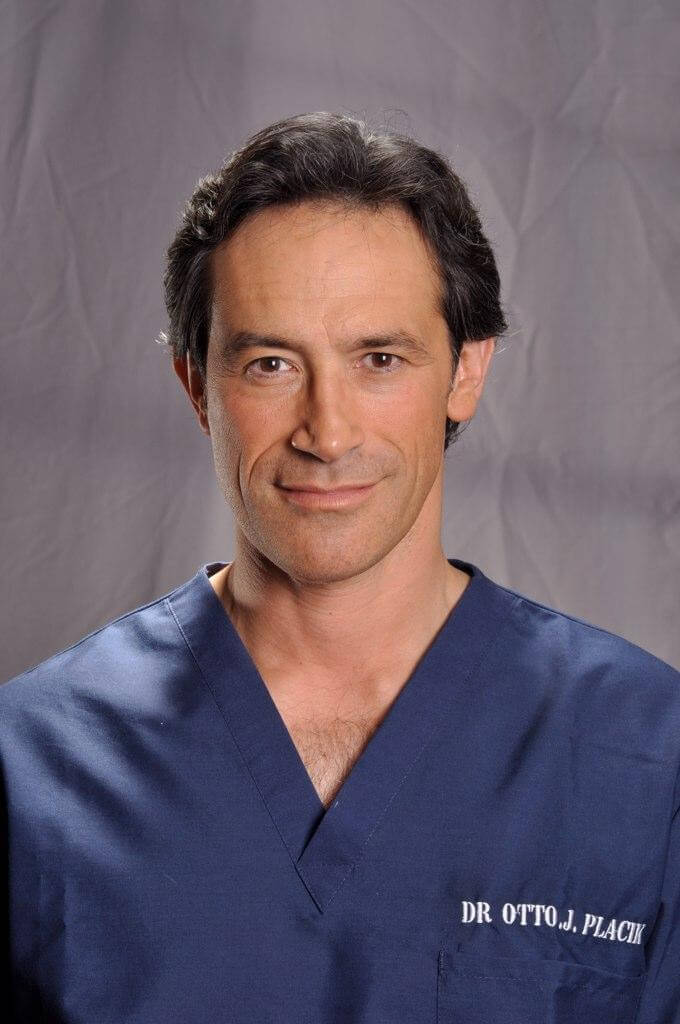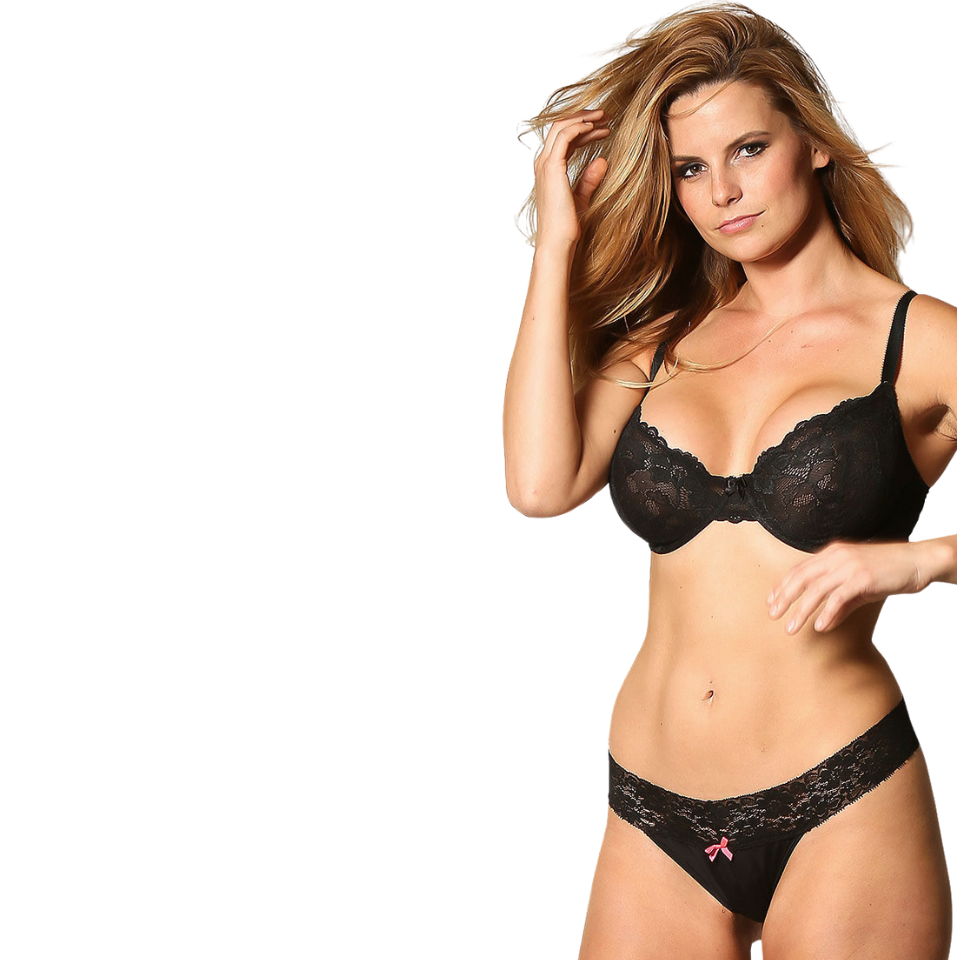Breast Augmentation Chicago – Enhance your Figure with Breast Implants
Dr. Otto Placik - Double Board Certified Plastic Surgeon
As a board-certified plastic surgeon, I am dedicated to helping patients achieve stunning, natural-looking outcomes through breast enhancement.
When women visit our practice for breast enhancement, they're often looking for more than just increased size. They want natural-looking results that boost their confidence and complement their unique body shape. That's exactly what Dr. Placik aims to provide.
Dr. Otto Placik combines surgical precision with an artist's eye to create results that look and feel natural. His approach draws from extensive training at Northwestern University and specialized fellowships in aesthetic reconstruction.
What is Breast Augmentation?
Breast augmentation enhances breast size and shape through implant placement. But it's not just about going bigger.
In his years of practice, Dr. Placik has helped women address many concerns: restoring volume lost after pregnancy, improving asymmetry, enhancing proportions, and boosting confidence. Each procedure is as unique as the woman herself.
Some patients come in knowing exactly what they want. Others have questions and concerns. That's normal! During your consultation, Dr. Placik will have an honest conversation about your goals and how breast augmentation might help achieve them.
The transformation often goes beyond physical appearance. Many of Dr. Placik's patients report they stand taller, feel more confident in clothes, and even approach social situations with renewed self-assurance.
Take Our Quiz: Is Breast Augmentation Right for You?

Benefits
-
Confidence that shows – There's something powerful about feeling comfortable in your own skin.
-
Clothes that fit better – Say goodbye to gapping blouses and hello to new style options.
-
Balanced proportions – Create harmony between your curves and your frame.
-
Restored pre-pregnancy shape – Reclaim what breastfeeding or weight fluctuations might have changed.
-
Symmetry improvements – Even small differences between breasts can affect how clothes fit.
-
Long-lasting results – Today's implants are designed for durability.
-
A boost after weight loss – Complete your transformation by restoring lost breast volume.
-
Custom results – No two augmentations Dr. Placik performs are identical.

Dr. Placik’s Expert Insights
“The most rewarding aspect of breast augmentation isn’t just the physical change—it’s seeing how it transforms a patient’s confidence. When a woman returns for her follow-up appointments standing taller and smiling more readily, that’s when I know we’ve achieved success beyond the surgical outcome.”
Dr. Placik’s approach to breast augmentation has evolved over his 20+ years in practice. He notes that the most common misconception new patients have is that bigger is always better.
“Finding the right size that complements a woman’s frame often leads to more natural, beautiful results than simply going as large as possible,” he explains. “I encourage patients to consider how implants will look in proportion to their overall body shape.”
One challenge Dr. Placik encounters regularly is helping women understand how breast augmentation results will evolve over time. “The immediate post-surgical appearance isn’t the final result,” he points out. “It takes 3-6 months for implants to fully settle and achieve their intended position.”
Dr. Placik also emphasizes the importance of realistic expectations: “The best candidates understand that breast augmentation can dramatically improve appearance and confidence, but like any procedure, it has limitations. I’m committed to honest conversations about what’s achievable for each unique body.”
Who are Good Candidates?
Not everyone is an ideal candidate for breast augmentation. In his practice, Dr. Placik finds the best results come when patients:
- Are healthy and at a stable weight. Surgery is safest when you’re in good physical condition.
- Have realistic expectations. Breast augmentation can dramatically improve your appearance, but understanding its limitations is important.
- Have small or asymmetrical breasts, or have lost volume after pregnancy or weight loss.
- Are done having children or understand that future pregnancies may affect their results. While breast augmentation doesn’t prevent breastfeeding, pregnancy can alter your results.
- Are at least 18 (for saline implants) or 22 (for silicone).
- Are doing this for themselves—not to please someone else.
During your consultation, Dr. Placik will discuss your health history, examine your breast tissue, and talk about what you hope to achieve. Sometimes he recommends combining procedures—like adding a lift for sagging breasts—for optimal results.
Calculate Your Body Proportion Ratio
Types of Breast Implants
Saline Implants
In his practice, Dr. Placik finds saline implants work well for women with enough natural breast tissue to provide good coverage. Without adequate tissue, rippling can sometimes be visible or felt. Saline implants have come a long way. Filled with sterile saltwater after placement, they offer several advantages:
-
They require smaller incisions since they're inserted empty.
-
If they leak (rare but possible), your body safely absorbs the saline.
-
They generally cost less than silicone alternatives.
-
They're FDA-approved for women 18 and older.
Silicone Breast Implants
Many of Dr. Placik's patients prefer silicone implants for their more natural feel. These pre-filled implants contain a cohesive silicone gel that closely mimics breast tissue.
The latest "gummy bear" implants maintain their shape even if the shell is compromised—a significant advancement in implant technology. According to a 2019 study published in the Aesthetic Surgery Journal, highly cohesive gel implants demonstrated a lower rate of capsular contracture compared to traditional silicone implants.
During your consultation, you'll actually handle different implant types—there's no substitute for this hands-on experience when making your decision.
-
The FDA has approved silicone implants for women 22 and older, and most of Dr. Placik's patients find the investment worthwhile for the natural-feeling results they provide.
-
Silicone implants tend to look and feel more natural, especially for women with less natural breast tissue. They're less likely to show rippling but require slightly larger incisions.
Implant Comparison Chart
When patients ask Dr. Placik to compare implants side by side, here’s what they learn:
|
Feature |
Saline |
Silicone |
What This Means For You |
|---|---|---|---|
|
Feel |
Firmer |
Softer, more natural |
Silicone tends to feel more like natural breast tissue |
|
Look |
Good with adequate tissue |
More natural, especially with thin tissue |
Your body type influences which might look better |
|
Incision Size |
Smaller |
Larger |
Saline requires roughly 1/2 inch less incision length |
|
If Rupture Occurs |
Noticeable deflation, saline absorbed |
May be “silent,” gel usually stays intact |
Saline ruptures are immediately obvious; silicone may require imaging to detect |
|
Cost |
Lower |
Higher |
The difference is typically $1,000-1,500 in most practices |
|
Best For |
Women with adequate tissue, budget-conscious |
Women seeking the most natural feel, thin tissue |
Your priorities help determine the best choice |
Dr. Placik emphasizes there’s no “best” implant—only the best choice for your unique situation and goals.
Comparing Breast Enhancement Options
While traditional implants remain the most popular choice for breast augmentation, Dr. Placik offers patients multiple options:
|
Enhancement Method |
Best For |
Recovery Time |
Results |
Longevity |
|---|---|---|---|---|
|
Silicone Implants |
Most women seeking natural feel with significant enhancement |
1-2 weeks before returning to work; 6 weeks for full activity |
Immediate, with settling over 3-6 months |
10-20+ years |
|
Saline Implants |
Women with adequate tissue coverage seeking more affordable option |
1-2 weeks before returning to work; 6 weeks for full activity |
Immediate, with settling over 3-6 months |
10-20+ years |
|
Fat Transfer |
Modest enhancement (up to 1 cup size) using your own tissue |
1 week for initial recovery; less restrictive than implants |
More subtle, completely natural feel |
Permanent, though some fat reabsorption occurs |
|
Hybrid Approach |
Combining smaller implants with fat transfer for natural edges |
1-2 weeks, with donor site recovery |
Natural appearance with more significant enhancement |
Implant component: 10-20+ years; Fat component: permanent |
Dr. Placik will discuss which approach might work best for your body type and goals during your consultation.
Procedure Cost
Breast augmentation with Dr. Placik typically ranges from $7,500 to $12,500, depending on:
- Implant type:
- Saline implants: starting at ~$7,500
- Silicone implants: starting at ~$8,500
- Procedure complexity (combined procedures or challenging cases may increase costs)
- Anesthesia and facility fees
This comprehensive fee includes:
- Pre-operative appointments
- Surgical procedure
- Board-certified anesthesiologist services
- High-quality, FDA-approved implants
- All post-operative appointments
- Surgical garments
Financing Options
Dr. Placik’s practice offers several financing solutions to make breast augmentation accessible:
- CareCredit®: Healthcare financing with low or zero interest plans (6-24 months)
- Alphaeon® Credit: Specifically for aesthetic procedures (terms up to 60 months)
- Flexible payment plans tailored to your situation
- All major credit cards accepted
Dr. Placik’s patient coordinator will guide you through all options and help find the best solution for your budget.
The Breast Augmentation Procedure – Step by Step
- Preparation
Dr. Placik will confirm your implant choice and surgical plan. He’ll make pre-surgical markings while you’re standing to ensure optimal implant positioning. - Anesthesia
A board-certified anesthesiologist administers general anesthesia so you’ll sleep comfortably throughout. - Incision
Dr. Placik will make discreet incisions based on your pre-surgical plan. He typically uses one of three approaches:- Inframammary (in the breast crease)—his most common approach, as it provides excellent access with well-hidden scars
- Periareolar (around the nipple)—well-concealed but not ideal for women with small areolas
- Transaxillary (in the armpit)—leaves no scar on the breast but offers less precise control
- Creating the Pocket
This is where experience really matters. Dr. Placik carefully creates a pocket either:- Under the chest muscle (submuscular)—often creates more natural-looking results
- Behind breast tissue but over muscle (subglandular)—may be appropriate for certain body types
- Implant Placement
Dr. Placik inserts the implants using a no-touch technique to minimize contamination risk. He takes time ensuring symmetry and natural contours. - Closure
He closes incisions with layered sutures for minimal scarring and applies a supportive dressing and surgical bra.
The procedure typically takes 1-2 hours. You’ll spend some time in recovery before going home the same day—yes, breast augmentation is outpatient surgery.
Recovery & Post-Operative Care
What to Expect in the First 24-48 Hours
| Symptoms | What to Expect | Recommended Care |
|---|---|---|
| Swelling, Soreness & Bruising | Common and will gradually decrease over the next few weeks. | Use ice packs (wrapped in cloth) to minimize swelling. |
| Compression Garment | Required to reduce swelling and provide support. | Wear a surgical bra or compression garment 24/7. |
| Incision Care | Keep incisions clean and dry. | Avoid direct water exposure and follow dressing change instructions. |
| Pain Management | Mild to moderate discomfort, controlled with medications. | Take prescribed pain relievers as directed. |
Week-by-Week Recovery Timeline
| Timeline | Healing Progress | Activity Guidelines |
|---|---|---|
| Week 1 | Swelling and bruising peak, mild discomfort continues. | Rest, avoid heavy lifting, light walking is encouraged. |
| Weeks 2-3 | Major swelling decreases, implants start to settle. | Light activities allowed, but no strenuous exercise. |
| Month 1-2 | Most swelling is gone, and breast shape looks more natural. | Return to non-strenuous exercise if cleared by surgeon. |
| Months 3-6 | Final shape and softening of implants, scars begin to fade. | Resume normal workouts, maintain scar treatment if needed. |
Do’s and Don’ts After Surgery
✅ Do’s
- Sleep on your back with elevated pillows to reduce swelling.
- Wear a compression bra 24/7 for proper healing.
- Take short walks to prevent blood clots and improve circulation.
- Stay hydrated and eat a balanced diet to promote healing.
- Follow up with your surgeon for post-op checkups.
❌ Don’ts
- Avoid heavy lifting and strenuous activities for at least 4-6 weeks.
- Do not sleep on your stomach or side to prevent implant shifting.
- No smoking or alcohol consumption as they slow healing.
- Do not wear underwire bras for 6 weeks to avoid irritation.
- Avoid excessive sun exposure to prevent scar darkening.
A Patient’s Journey: Sarah’s Breast Augmentation Experience
Consultation & Preparation
Sarah, a 34-year-old mother of two, considered breast augmentation after breastfeeding led to volume loss and asymmetry.
“I wanted confidence in clothes but was worried about looking unnatural,” Sarah says.
She met with Dr. Placik for an in-depth consultation, discussing goals and choosing moderate-sized silicone implants for a natural result. Sarah diligently followed pre-operative instructions to ensure a smooth surgery.
Surgery & Recovery
“Everyone made me feel comfortable. Dr. Placik answered all my last-minute questions before surgery.”
The initial recovery was easier than expected, with manageable soreness relieved by over-the-counter medication by day five. By the one-month mark, Sarah resumed most daily activities comfortably.
Results & Advice
“Six months later, my results look completely natural. Friends notice I look great but aren’t sure what’s changed. My confidence has soared.”
Sarah’s advice: “Do it for yourself. Follow Dr. Placik’s guidance carefully and allow yourself time to heal properly.”
Why Choose Dr. Placik?
Double Board-Certified Plastic Surgeon with 20+ Years of Experience
Dr. Otto Placik is certified by the American Board of Plastic Surgery (ABPS) and maintains active membership with the American Society of Plastic Surgeons (ASPS). With over two decades of surgical expertise, his credentials underscore a commitment to excellence and continuous advancement within the field.
Patient-Centered Approach for Natural-Looking Results
From day one, Dr. Placik listens closely to each patient’s goals, designing personalized plans that respect individual anatomy and desired outcomes. His focus on patient satisfaction, combined with a precise, artful technique, consistently yields beautiful, authentic results that enhance rather than overpower.
State-of-the-Art Surgical Techniques & Safety Standards
By using only FDA-approved implants and the latest surgical innovations, Dr. Placik ensures a higher level of comfort and confidence for his patients. All procedures are performed in accredited facilities, reinforcing a strong dedication to safety, advanced care, and optimal patient well-being.

Patient Testimonials
“After having three children, I had lost all volume in my breasts. Dr. Placik understood exactly what I wanted—natural results that fit my active lifestyle. Six months post-op, I couldn’t be happier with my results. The boost to my confidence has been amazing!”
— Jennifer S.
Verified Google Review ★★★★★
“I interviewed three surgeons before choosing Dr. Placik. His attention to detail and willingness to spend time answering all my questions set him apart. Now, a year after surgery, I can say with confidence I made the right choice. My results are exactly what I hoped for.”
— Michelle K.
Verified RealSelf Review ★★★★★
“As a fitness instructor, I was concerned about how breast augmentation would affect my workout routine. Dr. Placik created a custom surgical plan that took my active lifestyle into account. Recovery was smoother than expected, and I was back to teaching (modified) classes within three weeks.”
— Lisa M.
Verified Healthgrades Review ★★★★★
Frequently Asked Questions
Size selection is about proportion, not cup size. During your consultation, Dr. Placik uses specialized sizing systems that allow you to "try on" different volumes while wearing a surgical bra. This gives you a preview of how different sizes will look on your frame. He'll discuss how your lifestyle, body proportions, and aesthetic goals influence the ideal size for you.
Many of Dr. Placik's patients have successfully breastfed after breast augmentation. When future breastfeeding is a priority, he recommends techniques that minimize disruption to milk ducts and glandular tissue, such as submuscular placement and inframammary incisions.
Today's implants don't have an expiration date. While they're not considered lifetime devices, many women enjoy their implants for 15-20 years or more without complications. Regular check-ups allow Dr. Placik to monitor your implants and address any concerns before they become problems.
Most of Dr. Placik's patients retain normal sensation, though some experience temporary changes. By using precise surgical techniques and appropriate implant placement, he minimizes the risk of permanent sensory changes.
Implant removal is a straightforward procedure. If desired, it can be combined with a breast lift to address any skin laxity that might result from removal.
Dr. Placik uses meticulous closure techniques to minimize scarring, and places incisions where they're easily concealed. Most scars fade significantly over time and are barely noticeable after 12-18 months. He'll recommend scar care products to optimize healing.
Most patients are surprised that recovery isn't as painful as anticipated. They typically describe the sensation as pressure or muscle soreness rather than sharp pain. The most significant discomfort usually resolves within 3-5 days.
Light walking is encouraged immediately. You can typically resume cardio around 2-3 weeks and strength training (avoiding chest exercises) around 4 weeks. Full chest workouts can usually resume at 6 weeks. Dr. Placik provides a detailed activity timeline based on your individual healing.

Ready to Take the Next Step?
See Before & After Transformations | Schedule Your Consultation | Take Our Quiz
The best way to determine if breast augmentation is right for you is through a personal consultation. Dr. Placik will take time to understand your goals, evaluate your anatomy, and discuss options tailored specifically for you.
Contact our team at 312-787-5313 or complete our online form to schedule your consultation at either our downtown Chicago or Arlington Heights location.
About Dr. Otto Placik
Dr. Otto Placik is a board-certified plastic surgeon with over 20 years of experience specializing in aesthetic and reconstructive procedures. After earning his medical degree from Northwestern University, he completed residencies in general and plastic and reconstructive surgery through Northwestern, followed by fellowships in aesthetic reconstruction of complex facial deformities and microvascular surgery.
As an active member of the American Society of Plastic Surgeons and the American Society for Aesthetic Plastic Surgery, Dr. Placik remains at the forefront of advances in plastic surgery techniques and technology. His commitment to natural-looking results and patient safety has earned him a reputation as one of Chicago’s most trusted plastic surgeons.
Board Certifications:
- American Board of Plastic Surgery
Hospital Affiliations:
- Northwestern Memorial Hospital
- Advocate Lutheran General Hospital
Dr. Placik serves patients throughout the Chicago metropolitan area with offices in downtown Chicago and Arlington Heights.
Disclaimer: Individual results may vary. All surgical procedures carry risks. Dr. Placik provides thorough informed consent during consultations, detailing potential complications associated with breast augmentation. Consultation with Dr. Placik is necessary to determine if you are a suitable candidate for breast augmentation.
Contact Us
To meet with double board-certified plastic surgeon, Dr. Otto J. Placik, you can request a consultation online or call our Arlington Heights office at 847-398-1660 or our Chicago office at 312-787-5313 to schedule your appointment. We look forward to meeting with you and helping you look your very best.

Disclaimer: Consumer information is not shared with third parties for marketing purposes.
